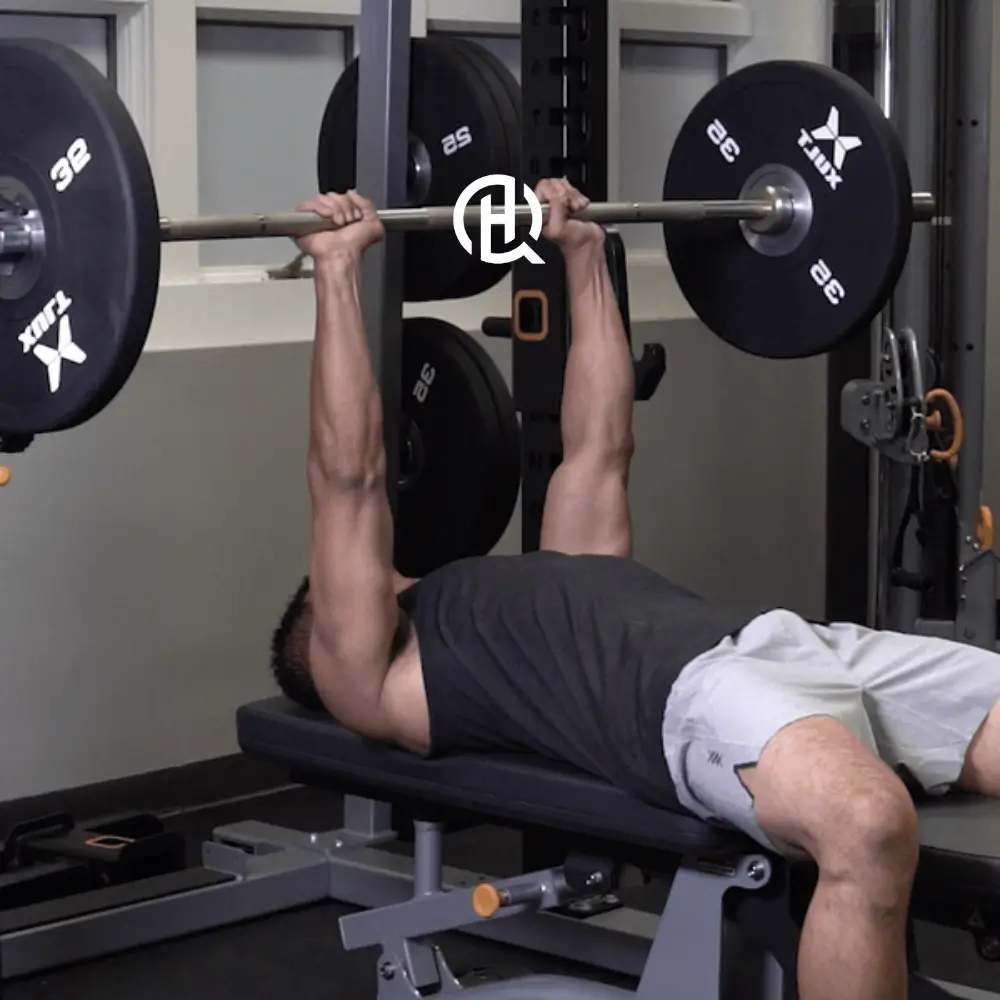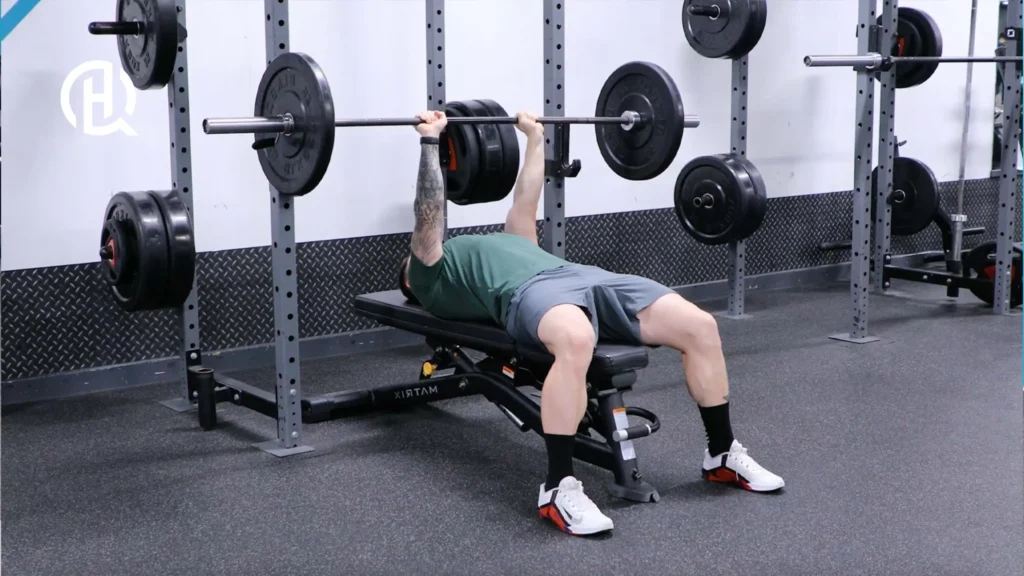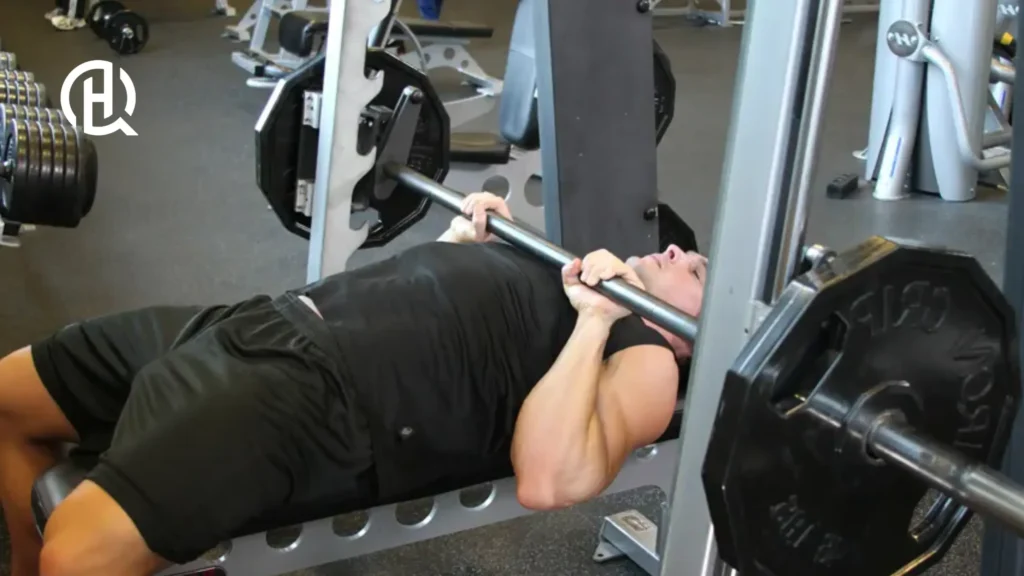

Want to get stronger, leaner, and take your fitness to the next level? Explore our workout programs now!
The close-grip bench press is a beloved triceps exercise, but it does more than just develop your upper arms. In many ways, it’s a variation of the barbell bench press, with the distinctive feature being the close grip that gives it its name. For that reason, it’s one of the ultimate triceps workouts for people who also want to develop other upper-body muscles (especially the pectorals).

It is among the top triceps exercises for chest development. In this short guide, you can learn everything you need to know about this particular exercise.
The key to the close-grip bench press is in the name. The trick is to grab the barbell with your hands slightly narrower than shoulder-width, prioritizing the close grip instead of the traditional wide grip.
In addition to the barbell, the only piece of equipment required is a bench. Before any rep, make sure your back is securely rested against the bench and that both of your feet are comfortably and completely placed on the floor.

During the barbell’s descent, ensure that it is directed to your lower chest area. Use as much control as possible, keeping your elbows close to your body to maximize muscle activation.
Finally, press the barbell back up, returning to your initial position with the arms extended.

Do you really need to add the close-grip bench press to your 5-day workout split? Well, while there are alternative triceps exercises that can help you achieve similar results, this particular exercise has several unique advantages, such as:

Here are three fairly simple close-grip bench press variations that are worth trying:

As you perfect the close-grip bench press, we recommend the following tips for maximizing results and making the most of every single workout routine:

Everybody can benefit from doing close-grip bench presses.
For powerlifters, the close-grip bench press is especially effective for improving lockout strength, since it places greater emphasis on the triceps during the final phase of the lift.
For bodybuilders, it serves as a solid compound movement that targets the chest, triceps, and shoulders, making it a great exercise to activate multiple upper-body muscles early in a workout.
For athletes, the close-grip bench press has been shown to enhance peak power and peak velocity, according to a 2017 study. These qualities are particularly useful in sports requiring explosive upper-body strength, such as American football, basketball, and boxing.